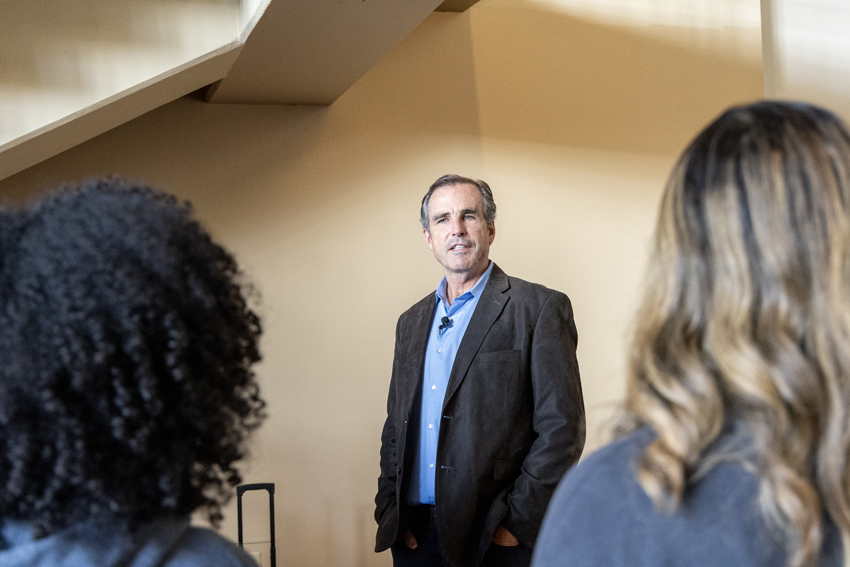Amidst the now-frequent verbal and physical attacks against Jews, many are wondering: how did this dispute in the Middle East transition into American bomb threats to synagogues and Jews around America fearing for their lives? With violent acts and intimidation even among the most educated at campuses around the nation, Jewish people’s faith in the American freedom of life, liberty, and the pursuit of happiness is seeing a rapid decline.
Although Israel has been consistently found in conflict throughout history, the current dispute is over the set borders by the United Nations in 1948. After the Holocaust, nations around the world recognized that due to the ruthless genocide during World War II, millions of Jews were not only killed but millions more were dispersed throughout Europe.
The UN sought to give Jewish people a country of their own to re-establish themselves as a nation, as well as to place them back into an area where their people hold historical and religious relevance dating back to the 9th century BC. This Israeli state was placed in then-British-mandated Palestine due to the location of Jerusalem and its historical significance to the Jewish people.
The territory was split into three: Gaza, Israel, and the West Bank. Upon implementation, the first Arab-Israeli war was sparked and after the Israeli victory, hundreds of thousands of Palestinians were moved out of their homes, many of them to Gaza and the West Bank.
After revolts by Palestinians, who were not only angered by the claim of what was previously their land but also their governing power, Israel and Palestine signed the Oslo I Accords, giving Palestine governing power in Gaza and the West Bank (the areas in which the majority of Palestinians had been moved to). Frustrations over the lost land and homes remained a staple throughout the Palestinian-governed territories.
Israel and Palestine have, in the past, attempted multiple times to rectify not only their relations but their borders. However, each time, these plans have been thwarted by extremist groups on either side. These extremists believe their country deserves the entirety of the land, and although these groups on both sides do have valuable arguments, they fail to acknowledge the millions of deaths that would be lost if either had their way. In the end, these groups ruined talks of negotiation through assassinations and bombings.
Realistically, the only way to find peace between the two without a significantly greater loss of life is first the dissolution of Hamas, and then a political discourse ending in a two-party state with the shared holy land of Jerusalem.
Hamas is the current threat, and if brought down, would bring at least temporary peace to Israel. However, Iran is the main source of funding, training, and arming of these anti-Israel terror organizations. The main question is: If Hamas is brought down, would Iran simply raise another organization through their targeted funding?
Hamas has continually pressed – through its charters and statements – that political solutions are impossible. In article 13 of their original charter, they state: “There is no solution for the Palestinian question except through Jihad. Initiatives, proposals, and international conferences are all a waste of time and vain endeavors.” Jihad, in this case, is not a religious reference but means continued revolt.
The arguments of Palestinian civilians and sympathizers in the West are separate from the terrorist groups in control in that they argue that Palestinians were pushed out of their land. Furthermore, the main cry from supporters of the Palestinians is the “open-air prison,” which is Gaza.

Due to the operation of Hamas out of Gaza and the governmental control, which has been held since the 2006 election, Israel blockaded the borders of Gaza. Now they control the supply in and out of the land. Hamas takes advantage of these humanitarian concerns in order to push its own goal of the eradication of Israel.
The current war officially began after the Oct. 7 attacks. Hamas launched a surprise attack on Israel. Hamas took advantage of a recognized Jewish religious holy day on Oct. 7 (not only Shabbat but also Shemini Atzeret) and the attack was completely unexpected. Hamas fighters breached the border of Gaza, and upon entry into Israel, killed an estimated 1,400 Israelis, the majority of which were civilians.
Unfortunately, as Hamas is the only current governing power in Gaza that is offering a solution other than a peace treaty, Palestinian civilian support for the terrorist group has continually risen since the war began. In fact, since the Oct. 7 attack on Israel, oddly enough, Palestinian support from within Gaza has risen exponentially. This means that as tensions rise, there is less and less of a chance for resolution through treaty.
In America, the historical support for Israel has suddenly made an unexpected shift. Governmentally, America still stands with Israel and continues to send monetary aid. However, America has not only seen a rise in Palestinian protests in major cities but also an uptick in antisemitic violence and hate speech, especially on college campuses.
Jewish students at campuses around America are reporting increased antisemitism. Of those surveyed, 73% of students reported having encountered antisemitism since the beginning of the Israel-Palestine conflict. Similarly, before the Oct. 7 attacks, 67% of students said they felt safe on their college campuses, although after, that number dropped to fewer than half (43%).
BREAKING: The United States House Committee on Education and the Workforce requested a plethora of documents from Penn on Wednesday, citing “grave concerns” about the University’s response to antisemitism on campus. https://t.co/eeNcygSYHJ
— The Daily Pennsylvanian (@dailypenn) January 24, 2024
Since this new uprise of antisemitism, the Department of Education has launched investigations into 71 universities and school districts, the most prominent of which are Cornell, Colombia, University of Pennsylvania, Lafayette, University of Cincinnati, and Harvard. The University of Pennsylvania stated when asked about the investigation “The university is taking clear and comprehensive action to prevent, address, and respond to antisemitism.” Contradictory to these statements, many colleges seem to be ignoring the issue.
Ugly scenes unfolded at Cooper Union, a private, Jewish liberal arts university in New York as Palestinian protestors moved into the campus and forced Jewish students to flee and take cover in the school library as the mob of protestors banged on the door and windows. The protest eventually moved on and the people inside the library were later freed.
In another instance, a professor at The School of the Art Institute of Chicago, Dr. Mika Tosca, a self-proclaimed as “Chicago’s radically optimistic transsexual climate scientist,” published a post on her Instagram story.
“Israelis are pigs. Savages,” she wrote. “Very bad people. Irredeemable excrement.”
Although later she revoked these statements with a less than satisfactory apology, the words spoken still stand powerfully to show her opinions, yet she is still currently employed with the school as a professor.
Many of these colleges are defending their students and professors who are delving into hateful rhetoric under the guise of American core values of “Freedom of Speech.” This is bringing them toward legal trouble and perhaps the removal of state funding from these universities in the future.
Claudine Gay, recently resigned president of Harvard University was brought before the House of Education Committee to respond to questions of how Harvard handles antisemitism on campus. Multiple college presidents, including Gay, were asked the question: “Does calling for the genocide of Jews violate Harvard’s rules on bullying and harassment?” and multiple similarly worded questions regarding hate speech and its allowance at these universities. Gay and other presidents refused to give straightforward answers.
“The rules around bullying and harassment are quite specific and if the context in which that language is used amounts to bullying and harassment, then we take, we take action against it.”
House majority leader Steve Scalise acknowledged these responses with a call for these presidents to resign.
“Disgusting that the presidents of Harvard, MIT, and UPenn refused to say that ‘calling for the genocide of Jews’ is considered harassment and bullying. Let’s be clear: It is,” Scalise wrote. “This shouldn’t be hard for college presidents to say.”
However, some schools are taking this as an opportunity to back up their students. Pepperdine President Jim Gash spoke out on Dec. 4 to reaffirm Jewish students attending the school, saying, “There is a difference between rights, and what is right.”
He continued in an op-ed, “It seems every week produces a new story of intolerance, hate, or worse on college and university campuses across the nation. As society rightfully expresses concern about students engaged in such behavior, it is past time for higher education administrators to take on their responsibility to cultivate academic communities that embody America’s founding virtues.”
“Ignorance can be just as dangerous as indifference, in that, those who do not know do just as much for the issue as those who do not care.” – Asa Dixon
It is important to acknowledge when the idea of “freedom of speech” begins to encroach on another’s well-being and safety, especially in state-funded establishments. There is an unfortunate grey space between the protection of free speech, which is a deeply rooted American value, and speech which infringes on the perceived safety of the people around them. Institutions now must decide where their values lie.
For those living in the expansive, and somewhat isolated United States, it is crucial to recognize the importance of staying informed and using that information to promote change. Ignorance can be just as dangerous as indifference, in that, those who do not know, do just as much for the issue as those who do not care. Students in high school are the new generation, the future voters and participants in society. The best time to learn is the present.
As we continue to see university and college leaders from around the country continue to step down, we must question not only the values that our country holds but how our policy must exemplify such. Where is the border between the First Amendment and the rights of Universities to hold their own rules? When must the government step in regarding the safety of its own citizens?
To read more on the rise of Antisemitism and free speech visit, Editorial: Antisemitism rises in the name of freedom of speech.
To read more from The Feather visit, Column: The gift of FCS or [Podcast] FC EagleCast, Episode No. 3 – Brian Butler









Cole Blanchfield • Jan 31, 2024 at 10:14 am
Excellent job Asa!